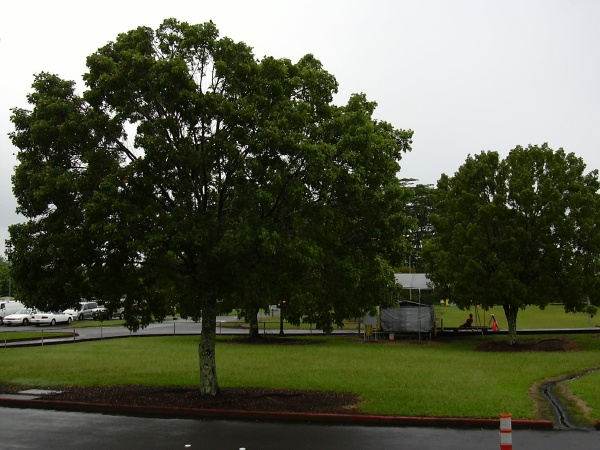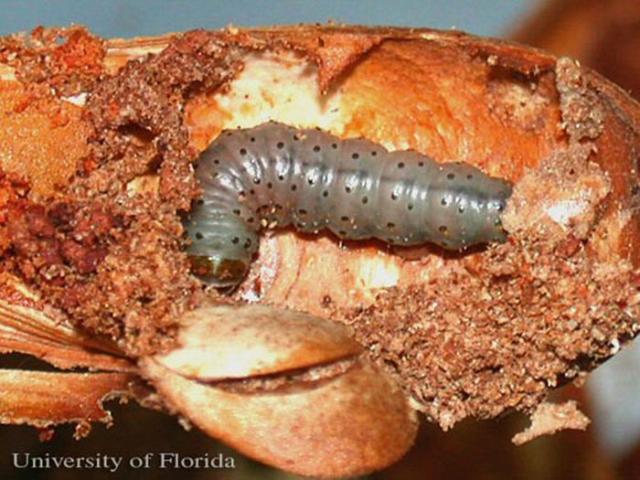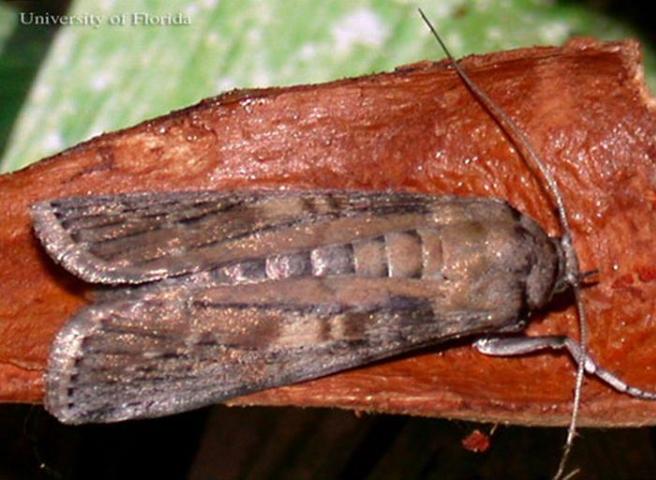
West Indies Mahogany: Interactions
The Shoot Borer
A main hindrance to the growth of this species has been damage by the
shoot borer9. The mahogany shoot borer, Hypsipyla
grandella, bores in twigs and seed capsules of trees in the
mahogany family (Meliaceae), especially S. mahagoni. It has been a
concentrated subject of research in several tropical countries, as it is
an important economic pest. Larvae
of Hypsiplya grandella attack the seed capsules of West Indies
mahoganies in spring
 (March-April after the capsule’s seeds were exposed1
. Therein which
they hollow out seeds. The hardness of
the capsule valves is an apparent a factor in preventing penetration by
the larvae, however. Although the larvae can attack new shoots, the seed
capsule contents appear to be the preferred food
source. When both were available, there were higher percentages of dehisced seed capsules than new shoots
that were attacked. The insect's most severe damage to trees occurs when
a larva bores into and kills the terminal shoot. A lateral branch grows
upward to replace the lost terminal shoot, resulting in a crooked main
stem.
(March-April after the capsule’s seeds were exposed1
. Therein which
they hollow out seeds. The hardness of
the capsule valves is an apparent a factor in preventing penetration by
the larvae, however. Although the larvae can attack new shoots, the seed
capsule contents appear to be the preferred food
source. When both were available, there were higher percentages of dehisced seed capsules than new shoots
that were attacked. The insect's most severe damage to trees occurs when
a larva bores into and kills the terminal shoot. A lateral branch grows
upward to replace the lost terminal shoot, resulting in a crooked main
stem.
Mahoganies growing in natural forests often occur at low densities and
mixed with many other species. Under such conditions they are less
likely to be attacked by mahogany shoot borers. However, as there are
nurseries in Florida containing many of these trees in order for
the dispersement of their ornamental value, these trees are more likely to be
attacked. By planting
mahogany trees with resistant genotypes, the management of shoot borer
damage could be effective. In the tropics, mahogany shoot
borers are active all year.

Even thought there has been research conducted in 23 tropical countries over the past eight decades, no reliable nor cost-effective control method has been found to prevent economic damage by these insects. There are about 40 species of insects that are natural enemies of the mahogany shoot borer, which are also native to the region, but their effect has been insufficient in preventing damage done to the trees.
The Web Worm
The mahogany webworm, Macalla thyrsisalis, is a moth species
whose caterpillar is a defoliator of West Indies mahogany
in Florida.
The caterpillars are a striking yellow color, and spin extensive webbing
in the spring, when they are most prevalent.
The larvae spins a web, pulling several leaves together and consume leaf tissue of the host plant. The larvae feed primarily on young, immature leaves, completing its stage in about ten days.
The Cattle Egret
There has been no significant studies done on a specific species of bird roosting in Mahogany trees, however, a peculiar case of the Cattle Egret was found to inhabit one tree in particular.
Cattle Egrets were not documented to breed in in urban areas until 1986, when they nested in a single West Indian mahogany (Swietenia mahagoni) a site they have continuously occupied to the present until their nests (and contents) were destroyed in July 2004 5.
Humans
It is undeniable that humans, of all organisms, have had the largest affect on West Indies mahogany. Because of the great commercial value the wood contains, this tree has become threatened, struggling to repopulate despite the aid of conversationalists. Check out the sustainability page to learn more.